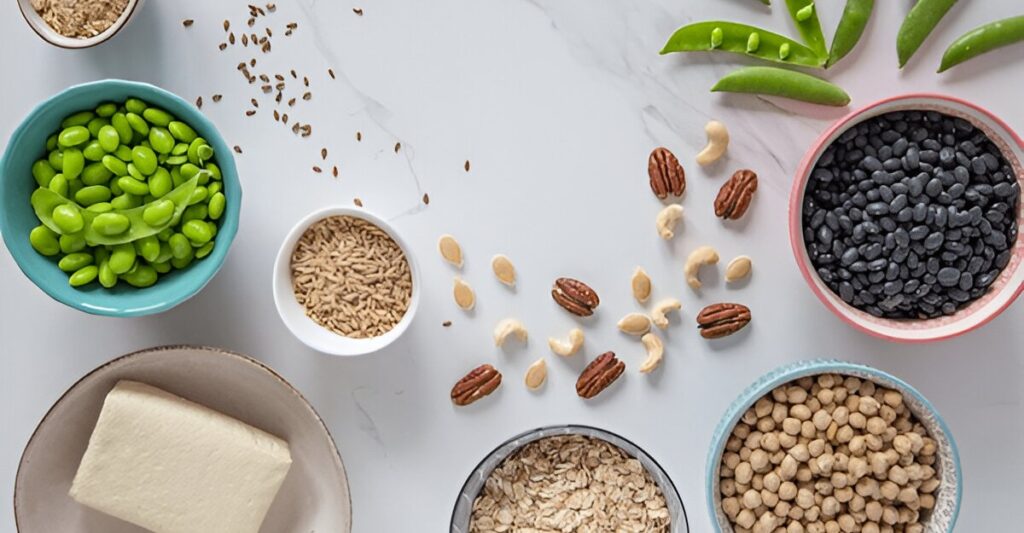Eating healthy doesn’t have to drain your wallet. With rising food prices, many people assume that nutritious meals are out of reach, but that’s far from the truth. By making smart choices, planning ahead, and getting creative in the kitchen, you can enjoy delicious, wholesome foods while sticking to a budget. In this article, we’ll share practical strategies for healthy eating on a budget, including affordable meal ideas, shopping tips, and ways to maximize your grocery dollars. Let’s dive into how you can nourish your body without breaking the bank!
Why Healthy Eating on a Budget Is Possible
The misconception that healthy food is always expensive often stems from trendy superfoods or pre-packaged “health” products. In reality, many nutrient-dense foods—like beans, rice, eggs, and seasonal produce—are both affordable and versatile. The key is to focus on whole, minimally processed ingredients and adopt habits that stretch your budget further. With a little planning, healthy eating on a budget becomes not only achievable but also sustainable.
Top Tips for Healthy Eating on a Budget
Here are actionable strategies to help you eat well without overspending:
1. Plan Your Meals in Advance
Meal planning is a game-changer for budget-conscious eaters. By mapping out your meals for the week, you can avoid impulse buys and reduce food waste.
- How to Do It: Choose simple recipes that use overlapping ingredients (e.g., rice for multiple dishes). Create a shopping list based on your plan and stick to it.
- Pro Tip: Plan around sales or seasonal produce for extra savings. For example, buy root vegetables in fall or citrus in winter when they’re cheaper.
2. Shop Smart at the Grocery Store
Your shopping habits can make or break your budget. Here’s how to get the most value from your grocery trips:
- Buy in Bulk: Staples like rice, oats, lentils, and pasta are cheaper when purchased in larger quantities. Store them properly to maintain freshness.
- Choose Store Brands: Generic brands are often just as nutritious as name brands but cost less.
- Check Unit Prices: Compare the cost per ounce or pound to find the best deals, especially for canned or frozen goods.
- Use Loyalty Programs: Many stores offer discounts or rewards for frequent shoppers.
3. Prioritize Affordable, Nutrient-Dense Foods
Some of the healthiest foods are also the most budget-friendly. Build your meals around these staples:
- Legumes: Beans, lentils, and chickpeas are high in protein, fiber, and minerals, and they cost pennies per serving.
- Whole Grains: Brown rice, oats, and whole-wheat pasta provide long-lasting energy and are incredibly versatile.
- Eggs: A nutrient powerhouse, eggs are affordable and can be used in countless dishes, from breakfast to dinner.
- Frozen Produce: Frozen fruits and vegetables are often cheaper than fresh, retain nutrients, and have a longer shelf life.
- In-Season Produce: Buy fruits and vegetables when they’re in season for better prices and flavor. For example, apples in fall or zucchini in summer.
4. Cook at Home and Batch Prep
Preparing meals at home saves money compared to eating out or buying pre-made foods. Batch cooking can also save time and reduce waste.
- How to Do It: Cook large portions of soups, stews, or casseroles and freeze leftovers for future meals. For example, a big pot of lentil soup can last several days.
- Pro Tip: Repurpose leftovers into new dishes. Turn roasted vegetables into a frittata or blend them into a soup.
5. Reduce Meat Consumption
Meat is often the most expensive item in a grocery cart. Cutting back can free up your budget for other nutritious foods.
- How to Do It: Try “Meatless Mondays” or use meat as a flavor enhancer rather than the main dish. For example, add a small amount of ground turkey to a bean chili.
- Affordable Alternatives: Eggs, tofu, lentils, and canned fish (like sardines or tuna) are budget-friendly protein sources.
6. Minimize Food Waste
Wasting food is like throwing money away. Get creative to use every bit of what you buy.
- How to Do It: Use vegetable scraps (like carrot tops or onion skins) to make homemade broth. Turn overripe fruit into smoothies or baked goods.
- Pro Tip: Store food properly to extend its life. Keep greens in a damp cloth or freeze herbs in olive oil.
Budget-Friendly Meal Ideas
Need inspiration? Here are three affordable, healthy meals that won’t break the bank:
- Lentil and Vegetable Soup:
- Ingredients: Lentils, carrots, onions, celery, canned tomatoes, spices.
- Cost: ~$1 per serving.
- Why It’s Great: High in fiber and protein, this hearty soup is filling and freezes well.
- Veggie Fried Rice:
- Ingredients: Brown rice, frozen mixed vegetables, eggs, soy sauce, garlic.
- Cost: ~$1.50 per serving.
- Why It’s Great: A versatile dish that uses pantry staples and leftover veggies.
- Oatmeal Breakfast Bowl:
- Ingredients: Oats, frozen berries, peanut butter, milk (or water).
- Cost: ~$0.75 per serving.
- Why It’s Great: Quick, nutrient-packed, and customizable with whatever toppings you have.
Common Mistakes to Avoid
When aiming for healthy eating on a budget, watch out for these pitfalls:
- Buying Pre-Packaged “Healthy” Foods: Items like granola bars or pre-cut produce are often overpriced. Make your own snacks or chop veggies at home.
- Ignoring Sales and Coupons: Check store flyers or apps for discounts on staples like canned beans or frozen produce.
- Overbuying Perishables: Only purchase what you can use before it spoils, or opt for frozen or canned alternatives.
Why Healthy Eating on a Budget Matters
Eating well on a budget isn’t just about saving money—it’s about prioritizing your health without financial stress. A nutrient-rich diet supports energy levels, strengthens immunity, and reduces the risk of chronic diseases like diabetes or heart disease. By adopting these strategies, you’re investing in your long-term well-being while keeping your wallet happy.
Conclusion
Healthy eating on a budget is entirely within reach with the right approach. By planning meals, shopping strategically, and choosing affordable, nutrient-dense foods, you can enjoy delicious and wholesome meals without overspending. Start small—try one new budget-friendly recipe this week or swap an expensive ingredient for a cheaper alternative. Over time, these habits will transform the way you eat and save you money in the process.
Ready to make healthy eating affordable? Grab your shopping list, hit the store with confidence, and enjoy nutritious meals that fit your budget!


